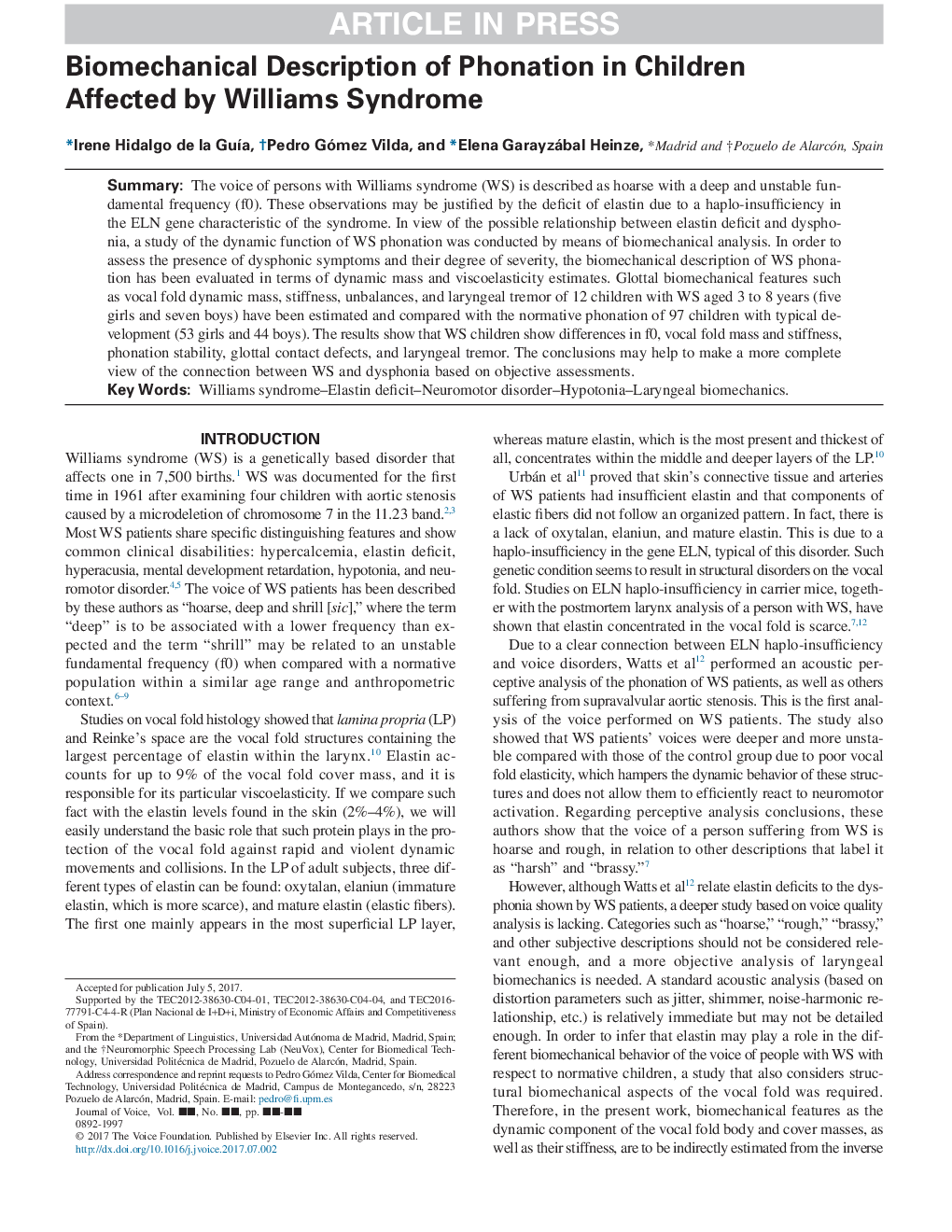| Article ID | Journal | Published Year | Pages | File Type |
|---|---|---|---|---|
| 7533079 | Journal of Voice | 2018 | 14 Pages |
Abstract
The voice of persons with Williams syndrome (WS) is described as hoarse with a deep and unstable fundamental frequency (f0). These observations may be justified by the deficit of elastin due to a haplo-insufficiency in the ELN gene characteristic of the syndrome. In view of the possible relationship between elastin deficit and dysphonia, a study of the dynamic function of WS phonation was conducted by means of biomechanical analysis. In order to assess the presence of dysphonic symptoms and their degree of severity, the biomechanical description of WS phonation has been evaluated in terms of dynamic mass and viscoelasticity estimates. Glottal biomechanical features such as vocal fold dynamic mass, stiffness, unbalances, and laryngeal tremor of 12 children with WS aged 3 to 8 years (five girls and seven boys) have been estimated and compared with the normative phonation of 97 children with typical development (53 girls and 44 boys). The results show that WS children show differences in f0, vocal fold mass and stiffness, phonation stability, glottal contact defects, and laryngeal tremor. The conclusions may help to make a more complete view of the connection between WS and dysphonia based on objective assessments.
Keywords
Related Topics
Health Sciences
Medicine and Dentistry
Otorhinolaryngology and Facial Plastic Surgery
Authors
I. Hidalgo, P. Gómez Vilda, E. Garayzábal,
